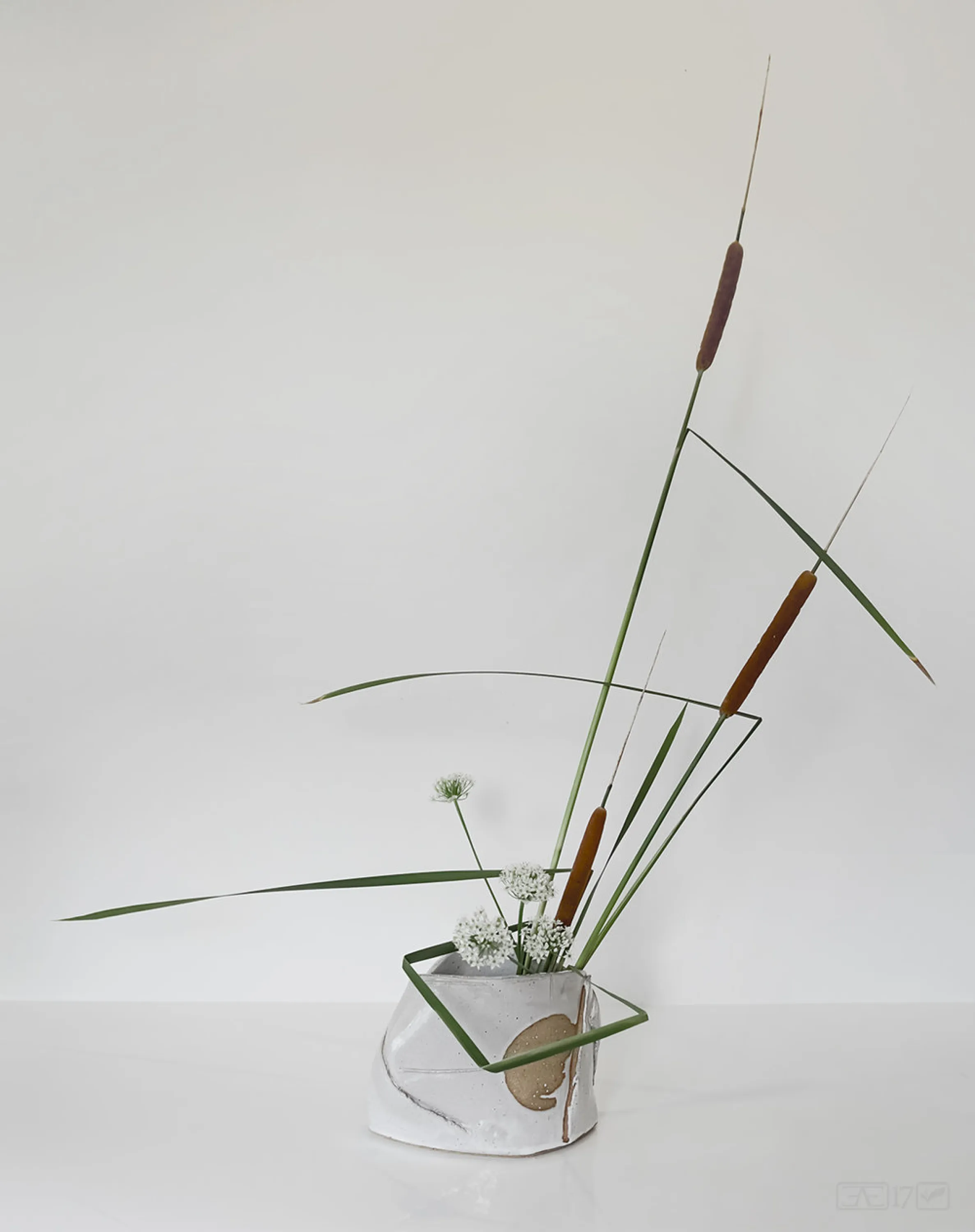Ikebana: a flower arrangement art inspiring respectful connection
Ikebana – from the Japanese ikeru (keep alive, arrange) and hana (flower) is the traditional Japanese art of arranging flowers.
Apart from the stylistic and theoretical details that characterize different Ikebana schools, the founding principles of this millenary art form promote a deep and intentional connection with life that’s very close to a biophilic ethos…
Respectful connection to nature
Ikebana is much more than just placing flowers in a vessel. Creating an Ikebana arrangement is a way to connect with nature, admire its beauty, and take the time to observe its finest details.
Respect for the natural world is key. As an example, preserving life by keeping the flowers alive is a primary objective of Ikebana. Vessels are chosen accordingly and delicately filled with plenty of clear life-sustaining water.
Some Ikebana schools prefer to retain the natural shapes of stems and branches while others bend and cut them to create specific curves and angles. Either way, every stem is treasured and treated with utmost care.

Harmonious richness
Ikebana pursues harmony in all aspects. Shapes, colours, materials, disposition…every detail is carefully pondered to create harmonious combinations.
At the same time, Ikebana arrangements are rich and interesting, balancing contrasting features such as solid and void, movement and stillness.
The main visual difference between Ikebana and a Western-style floral arrangement is negative space. The empty space between flowers is just as important as the flowers themselves and actually makes the individual stems stand out even more. Branches and flowers are often slanted in different directions and the overall composition is a balanced alternation of solid and void. Oftentimes, Ikebana arrangements are asymmetric, adding tension and a sense of movement to the minimalistic compositions. Some arrangements even seem unstable, recalling the biophilic concept of apparent risk.
As a whole, Ikebana arrangements are extremely ordered yet also rich and interesting, mirroring the biophilic principle of ordered complexity.


Local belonging
Ikebana arrangements are meant to celebrate local nature. As such, the elements of an arrangement are usually plants that grow in the same ecosystem, that are foraged locally and with consideration. Also, Ikebana doesn’t use just flowers: stems, leaves and other elements are equally displayed to celebrate the wholeness of local nature.
This connects to biophilic design in the topic of local identity, hence the willingness to shape authentic spaces that are rooted in their local surroundings and celebrate them.

Seasonality
From colours and shapes to the selection of vessels, all the elements of an Ikebana arrangement are chosen to represent a season. Dry branches will be mostly used during autumn and winter. For a spring arrangement, stems will be highly bent to represent strong winds. And for summer, vases will be mostly shallow, to expose the water surface and benefit from its refreshing power.
Similarly, biophilic spaces strive to connect their occupants to the passing of seasons and the ever-changing natural systems. Flower and greenery arrangements also play a role, as they can embody the distinctive features of each season.



Far from being only about aesthetics. Ikebana gives a whole new meaning to flower arrangements, pursuing the same underlying objective of biophilic design: gently inviting people to connect to nature on a deep level.